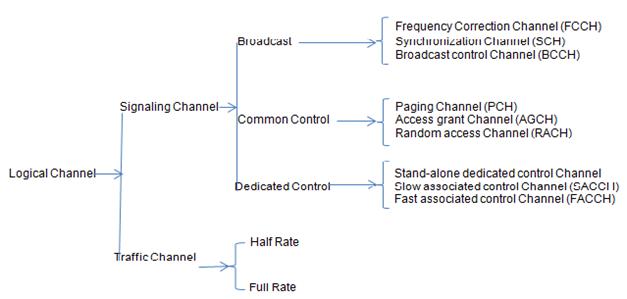What is GSM? Explain the channel structure in GSM.
b) What is GSM? Explain the channel structure in GSM. Ans.Global System for Mobile Communication (GSM) is the most popular technology for mobile phones now days. ). GSM a standard developed by the European Telecommunications Standards Institute (ETSI). Firstly it name was the group special mobile (GSM) and later named as global system for mobile communications (GSM). It is a digital mobile telephony system that is widely used in Europe.
The main motto of GSM was to provide a mobile phone system that allows users to roaming facility throughout Europe. It is a second generation (2G) standard for mobile networks and uses digital techniques. GSM uses the Frequency Division Multiple Access (FDMA) and Time Division Multiple Access (TDMA).
GSM provides three different categories of services: - Bearer.
- Tele.
- Supplementary services.
Bearer Service or Data ServicesBearer services permit transparent and non-transparent, synchronous or asynchronous data transmission. It allows data transmission between network interfaces. By using data services a user can to transmit appropriate signals between user network interfaces.
Teleservices or Telephony Services:GSM provides the following main Telephony Services.
- Voice Calls
- Videotext
- Short Text Messages
Supplementary servicesGSM provides the following Supplementary services
- Multiparty Service or conferencing.
- Call Waiting.
- Call Hold.
- Call Forwarding.
- Number Identification.
- Closed User Groups (CUGs).
Channel structure in GSM: